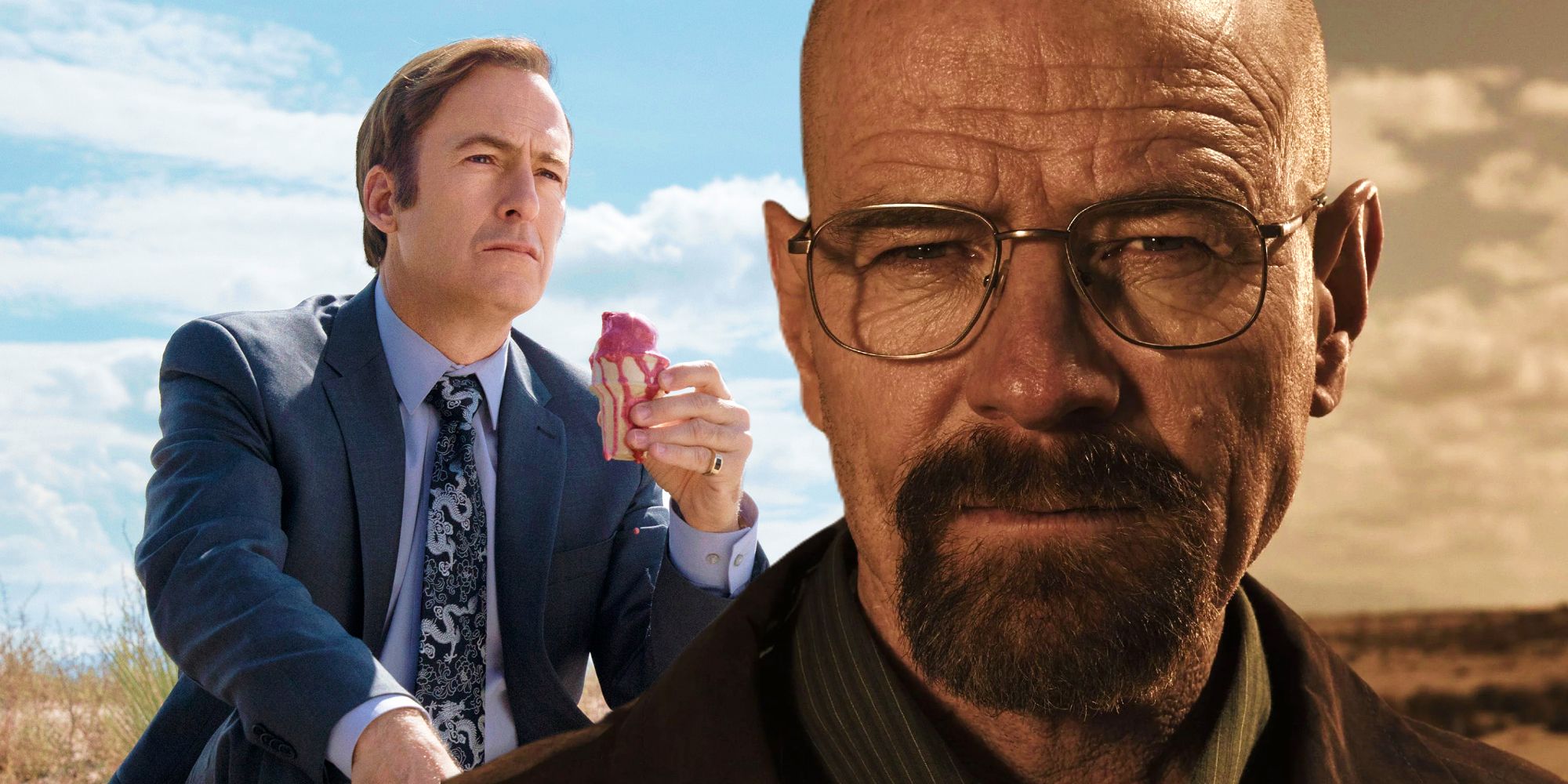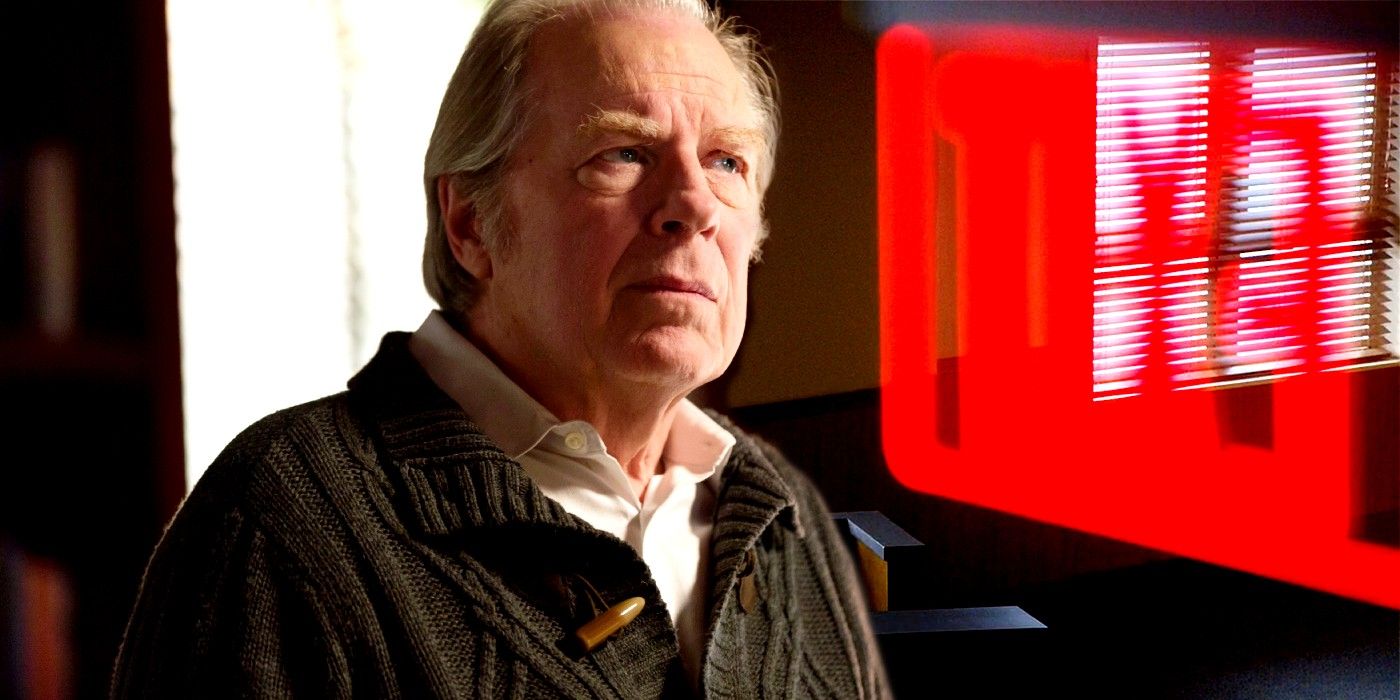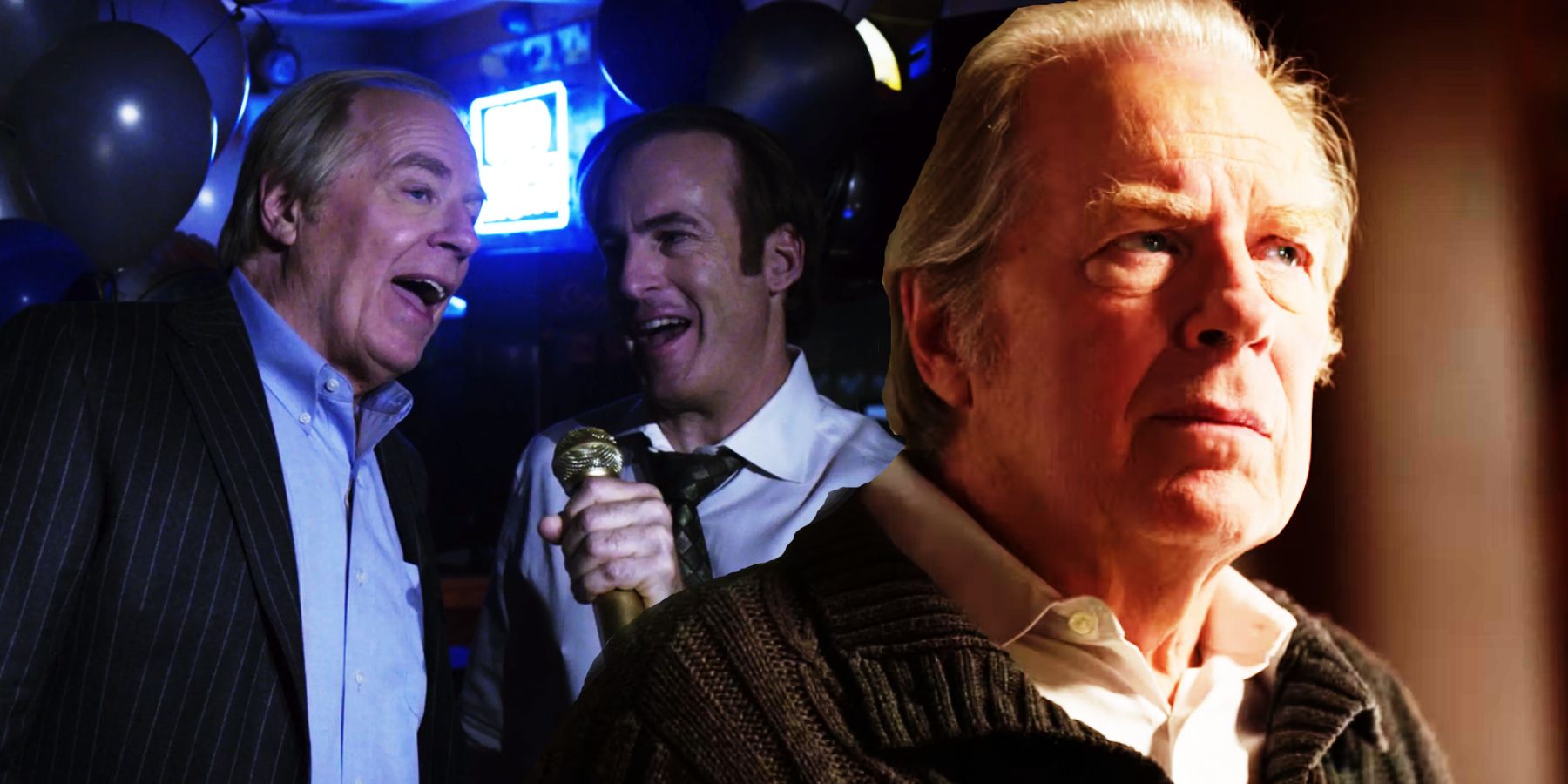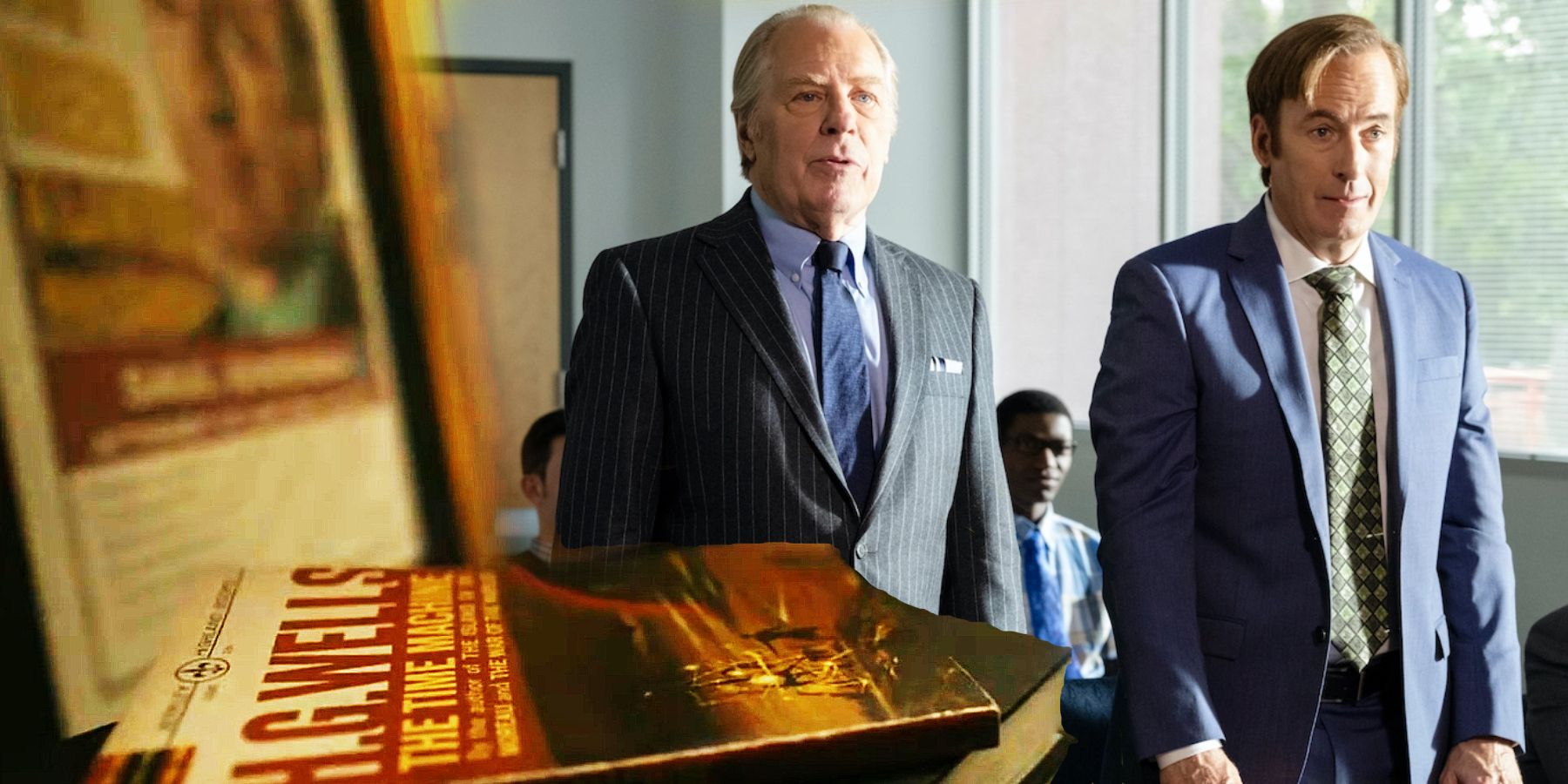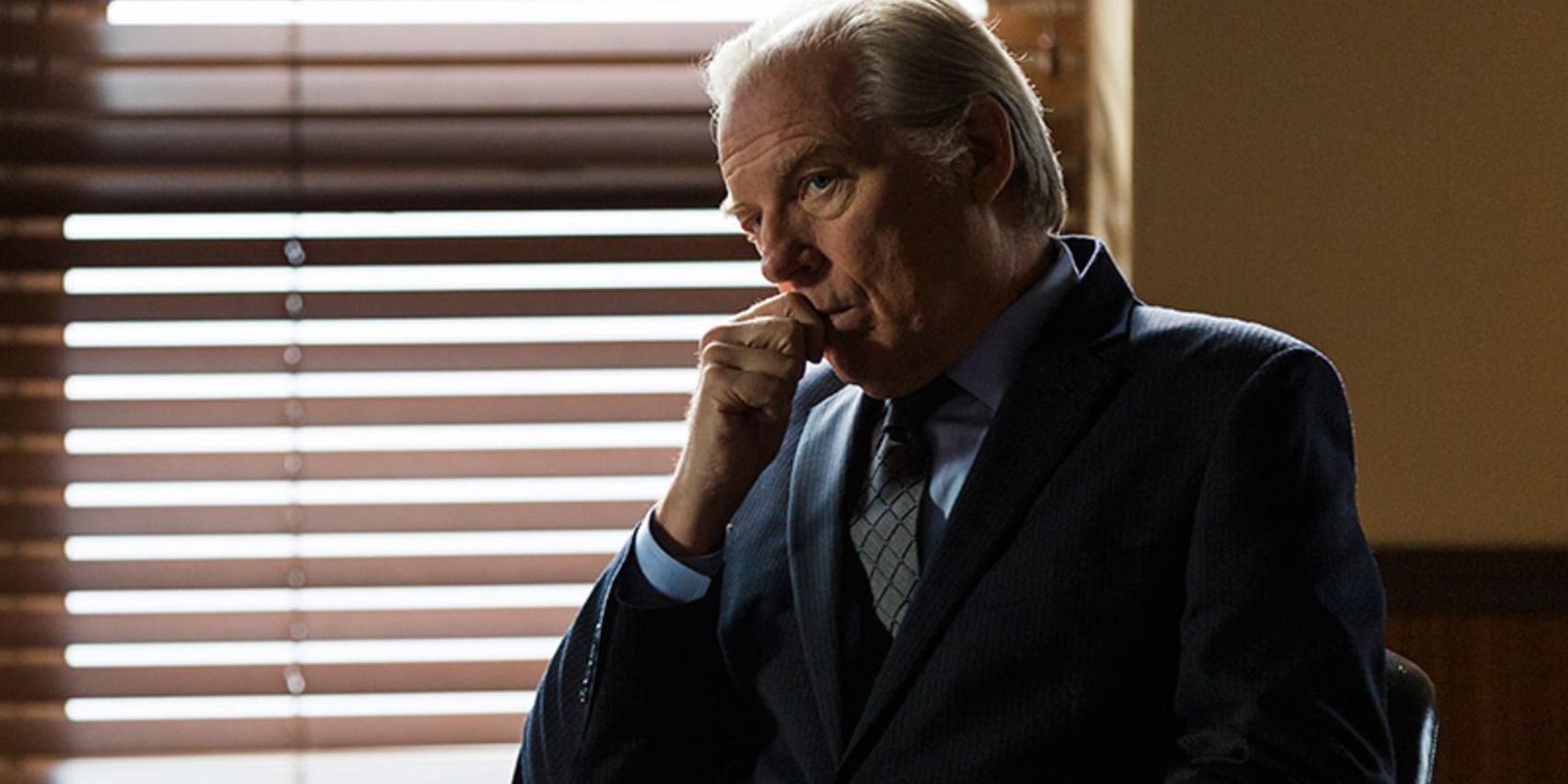Despite all the ways Better Call Saul improved Breaking Bad, what truly made the spinoff prequel series so good was a character that was not even part of Breaking Bad. When a Breaking Bad prequel focused on Saul Goodman was announced, it was difficult to imagine that such a story could be as good as following Walter White’s fall for five seasons. Saul Goodman was already an audience-favorite character, yet Breaking Bad had never really explored Heisenberg's lawyer beyond his importance to Walter and Jesse’s story. This was a challenge that Better Call Saul had to overcome, and it did perfectly.
By not limiting itself to the original show’s characters, Better Call Saul became better than Breaking Bad. That said, Better Call Saul did begin by focusing on its Breaking Bad connections. Not only did the show open as a Breaking Bad sequel following Saul Goodman’s new life in Omaha, but Jimmy McGill’s first adventure was meeting Tuco Salamanca. Saul Goodman and Tuco Salamanca negotiating in a desert seemed like something from a Breaking Bad episode, which shows how Better Call Saul was still trying to find its identity. However, by the end of season 1, Better Call Saul had moved beyond its Breaking Bad connections thanks to Chuck McGill.
Chuck McGill Was Better Call Saul’s Most Important Character
If audiences were supposed to root for Jimmy McGill before Breaking Bad’s Saul Goodman came to be, then the show had to have a villain – someone to antagonize Jimmy. According to co-creator Vince Gilligan (via The New Yorker), that was supposed to be Howard Hamlin. The first few Better Call Saul episodes frame Howard as the perfect antagonist for Jimmy – the successful lawyer who looked down on Jimmy. However, as Gilligan put it, the first two Better Call Saul episodes did not really tell much about Chuck. Instead of a “Mycroft Holmes” scenario, the writers realized that having Michael McKean as the antagonist would be far more interesting.
Gilligan describes how there was an “edge” to the way McKean was playing Chuck in Better Call Saul, something that set the tone for what the character was going to be. After Chuck left the house in the middle of the night to make a mysterious call, Jimmy’s brother was no longer the Mycroft to Jimmy’s Sherlock but instead the most complex antagonist in all the Breaking Bad universe. Chuck was not a supervillain like Gus or Lydia, characters who Walter had to face using his intelligence and skills, but rather someone who could hurt Jimmy with nothing but words. That was showcased in Better Call Saul season 1, episode 9, “Pimento.”
Chuck’s “you're slippin' Jimmy” speech at the end of Better Call Saul season 1, the moment in which it is finally revealed who was playing against Jimmy’s potential career at HHM this whole time, changed not only Jimmy and Chuck’s relationship but the show as a whole. Suddenly, Howard was no longer the villain, and the biggest threat to Jimmy was no longer Nacho or the Salamancas. In addition, Chuck’s speech posed a question to viewers – had Jimmy yet to become Saul Goodman, or was he always like that as Chuck was saying? That dilemma continued throughout Better Call Saul, and in some ways, was never answered.
Jimmy & Chuck’s Relationship Set Better Call Saul Apart From Breaking Bad
Jimmy and Chuck’s relationship was so important to Better Call Saul because it set the spinoff show apart from Breaking Bad. Before the Chuck reveal, the most interesting Better Call Saul storylines were linked to Breaking Bad on some level – Nacho’s connection with the Salamanca and everything related to Mike. Those Breaking Bad links continued in all Better Call Saul seasons, yet Chuck Mcgill brought something completely unique into Saul’s story. Chuck had nothing to do with the events of Breaking Bad – he was never mentioned or referenced on the show – and he antagonized the future Saul Goodman on a much personal level.
Chuck also contributed to the “lawyer aspect” of Better Call Saul. Described as the most brilliant legal mind by everyone who knew him, Chuck was the role model for Jimmy both as a person and as a lawyer. After realizing that Chuck was playing against him this whole time, Jimmy could not help but question if Chuck was right – would he never change? That dilemma is completely different from Walter White’s story, as Breaking Bad makes it clear that all that power only unveiled who Walter really was. Better Call Saul made Saul Goodman different, and more complex, than Walter White all thanks to Chuck.
Chuck McGill’s Death Changed Better Call Saul Forever
Better Call Saul can be divided into two parts – before and after Chuck McGill’s death. When Chuck was still around, most of the show’s storylines would eventually come down to the relationship between Jimmy and his brother. From the HHM plotlines to Kim and Jimmy’s partnership, everything had to do with Chuck on some level. The Gus and Mike vs. the Salamancas storyline was already there, yet had very little influence on Jimmy at that point. As interesting as it was to see Mike meeting Gus for the first time or plotting against Hector Salamanca, episodes like “Chicanery” were what made Better Call Saul more than a Breaking Bad prequel.
After Chuck McGill’s death, the cartel storyline became Better Call Saul’s main motif. There was no longer a personal rival to Jimmy, so now all the villains had to be part of something bigger. For example, eight episodes after Chuck’s death, Better Call Saul introduced Lalo Salamanca. In a way, Lalo was the replacement for Chuck in Better Call Saul – the character who set the tone for what challenges Jimmy and Kim would face. Lalo Salamanca’s war on Gus Fring brought Better Call Saul closer to Breaking Bad in terms of tone and timeline, which shows how unique Chuck McGill’s character was.
Better Call Saul’s Best Moments Little Had To Do With Breaking Bad
Essentially, Better Call Saul was at its best when it had nothing to do with Breaking Bad. Getting to know more about Mike and Gus improved Walter White’s story, but characters whose fates were not sealed by Breaking Bad were what elevated Jimmy McGill’s journey. Perhaps the only exception is Lalo Salamanca, who, despite not appearing in Breaking Bad, helped bridge Jimmy McGill and Saul Goodman. Chuck was the perfect example of how Better Call Saul found its identity beyond Breaking Bad, as Jimmy’s brother never interacted with a Breaking Bad character except for two brief moments with Mike and Huel, respectively.
Kim Wexler is another major example of how Better Call Saul set itself apart from Breaking Bad, with her story being as important as Jimmy’s by the end of Better Call Saul season 6. Still, the fragility with which Better Call Saul treated Jimmy, and Kim as a consequence, only started after the Chuck reveal back in season 1. That is why Chuck continued to be Better Call Saul’s most important character, as his actions still reflected in Jimmy’s life. From Jimmy McGill to Saul Goodman, Better Call Saul delivered a longer, more complex journey than Breaking Bad did – an incredible feat for the prequel series.

